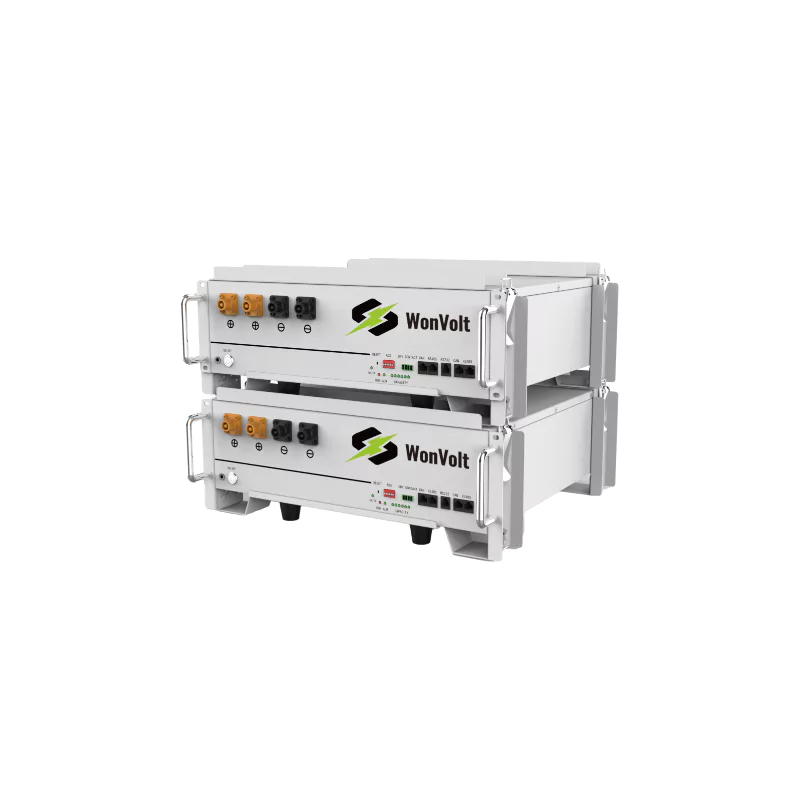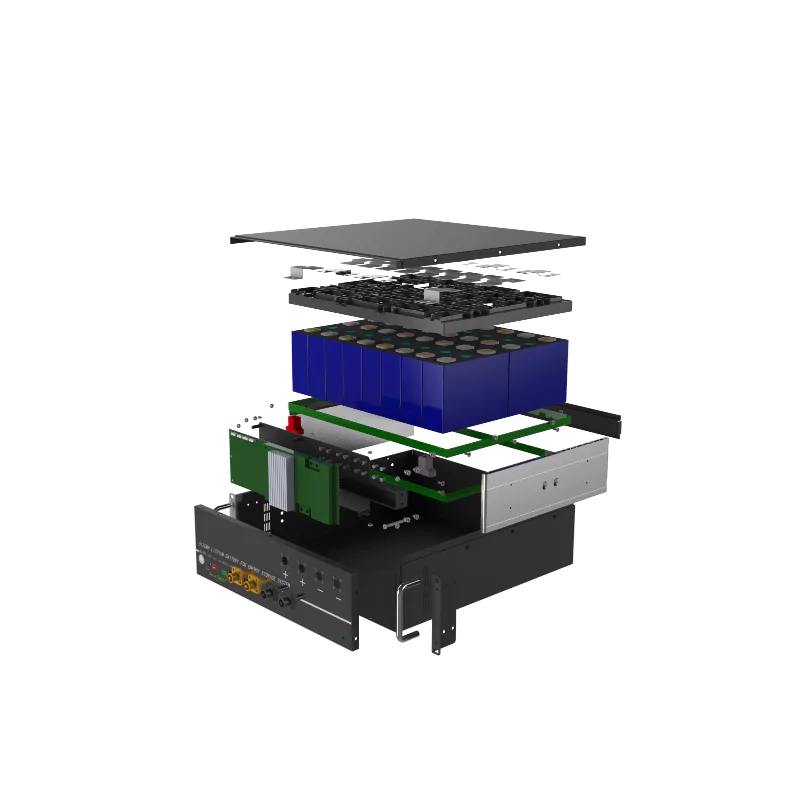Fires in lithium battery solar storage systems are rare but can be risky because of thermal runaway. Understanding why these fires start, like chemical problems or poor air movement, is important to stop them. This guide explores fire dangers, new safety tools like smart BMS and liquid cooling, and the best ways to set up systems safely. See how companies like WonVolt use modern solutions to create safe, reliable energy storage.

What Are the Fire Risks in Lithium Battery Solar Storage Systems?
Common Causes of Fire in Lithium Battery Systems
Lithium battery fires often begin with thermal runaway. This happens when heat grows inside the battery faster than it can get out. As a result, the temperature shoots up quickly and can’t be controlled. Physical harm, like scratches or dents on the battery cover, may lead to short circuits inside. Overcharging or emptying the battery too much, called electrical misuse, can cause trouble and make it too hot. Extreme heat from outside, or thermal misuse, can start strong reactions in the battery. These reactions might cause fires or explosions.
The Chemistry Behind Lithium Battery Fire Risks
The makeup of lithium-ion batteries plays a big role in their fire dangers. These batteries use flammable liquids called electrolytes. During thermal runaway, intense chemical reactions happen between the battery’s positive part (cathode) and the electrolyte. For instance, high-nickel materials in the cathode boost energy but are less stable in heat. Also, a protective layer called the solid electrolyte interface (SEI), formed when the battery is first charged, can break down over time. This breakdown raises the chance of failure.
Environmental Factors Contributing to Fire Hazards
Outside conditions can worsen fire risks. Hot weather or poor airflow can push batteries toward thermal runaway. Badly planned setups in tight spaces without enough cooling make things worse. Dust, dirt, or water sneaking into the battery can also cause rust or damage, increasing the odds of a breakdown.
How Can Safer Lithium Battery Solar Storage Systems Be Designed?
Key Features of Safe Lithium Batteries for Solar Storage
Smart design choices greatly improve safety in lithium batteries for solar storage. Modular setups, for example, allow better heat spread and flexibility for growth. The WV51100L model shows this well. It’s a high-capacity system that supports up to 15 parallel connections. This makes it safe and strong for homes or businesses.
The Role of Battery Management Systems (BMS) in Fire Prevention
A strong Battery Management System (BMS) is key to keeping things safe. It watches over things like voltage, temperature, and charge levels. Smart BMSs can spot trouble early by catching odd patterns in data as they happen. For example, systems with CAN bus RS-485 connections work smoothly with modern tech. They boost performance while cutting risks.
Importance of Proper Ventilation and Thermal Management
Good airflow is a must to let heat escape during use. Liquid cooling systems beat air-cooled ones by keeping all battery cells at steady temperatures. The 230kWh Liquid Cooling Battery Cabinet, for instance, uses this tech to sharply lower the chance of overheating.
What Are the Best Practices for Installation and Maintenance?
Guidelines for Installing Lithium Battery Solar Storage Systems Safely
Safe setup starts with picking the right spot. Choose a place away from extreme heat or harmful substances. Leave enough room between units for air to flow. Use cases made for energy storage systems. Always follow local electrical rules and standards.
Regular Inspection and Maintenance Protocols
Checking systems often is crucial to catch early signs of wear or damage. Look at connectors, terminals, and cases for rust or dents regularly. Use tools linked to BMSs to track system health all the time.
Handling and Disposal of Damaged or Degraded Batteries
If a battery is damaged, move it away from others right away to avoid more trouble. When getting rid of old or broken batteries, use certified recycling centers that know how to handle risky materials safely.
WonVolt’s Approach to Safety in Lithium Battery Technology
Overview of WonVolt’s Safety Standards and Innovations
Safety is at the heart of WonVolt’s work in lithium battery tech, especially for energy storage. With a production capacity of 2.5GWh for lithium batteries and 1.2GW for solar panels, WonVolt leads in clean energy solutions. Its products include containerized battery energy storage systems (BESS), liquid-cooling lithium batteries, and smart air-cooled lithium batteries. These are built with top-notch safety features to prevent thermal runaway and other dangers.
WonVolt uses cutting-edge tools like Smart Battery Management Systems (BMS). These systems keep an eye on temperature, voltage, and charge levels to avoid electrical or heat-related problems. Modular designs in their batteries also help spread heat better, keeping performance steady even in tough conditions.
WonVolt’s focus on safety goes beyond design. They test products thoroughly to meet global standards. Their batteries offer long life and high efficiency, setting a high standard for safety and dependability in the industry.
Recommended WonVolt Products for Safe Solar Energy Storage
For those looking for secure energy storage, WonVolt has standout products with top safety features. The WV51100L model is a great example. This high-capacity modular system allows up to 15 batteries to connect in parallel. It’s perfect for homes or businesses and includes strong protections against overheating.
Another solid choice is the WV51300L LiFePO4 battery. It lasts over 15 years thanks to its dependable LFP cells. With a Smart BMS, it prevents overcharging or draining too much—common causes of thermal runaway.
For big projects, the 230kWh Liquid Cooling Battery Cabinet shines. Its liquid cooling tech keeps temperatures even across all cells, greatly reducing overheating risks.
Strategies for Emergency Preparedness and Response
Developing an Emergency Response Plan for Battery Fires
Lithium-ion batteries can be risky, so a solid emergency plan is a must. Start by listing possible dangers, like thermal runaway from physical or electrical damage. Plans should include steps to isolate problem units quickly. Use fire suppression tools made for lithium-ion battery fires.
Train workers to spot early signs of trouble, like extra heat or swelling. This can stop small issues from turning into big disasters. Keep special fire extinguishers, like Class D ones for metal fires, on hand.
Training Personnel on Fire Mitigation Measures
Good training is critical for handling high-energy systems safely. Teach workers how to manage lithium batteries properly. Show them how to check for wear or damage often. Make sure they know how to use BMS tools that give live updates on system health.
Hold workshops on fire prevention. Cover topics like safe battery disposal and keeping spaces well-ventilated to lower risks.
FAQs
Q: What safety features are included in modern lithium batteries?
A: Today’s lithium batteries have Smart BMSs for live monitoring, modular designs for better heat spread, and advanced cooling like liquid systems.
Q: How can I prepare my facility for potential lithium battery fires?
A: Create an emergency plan. Include isolating problem units, using proper fire extinguishers, and training staff to spot early warning signs.
Q: Are there specific products recommended for safe solar energy storage?
A: Yes, models like the WV51100L and WV51300L are great. They offer modular designs and long-lasting LFP cells. For bigger needs, the 230kWh Liquid Cooling Battery Cabinet is ideal.


